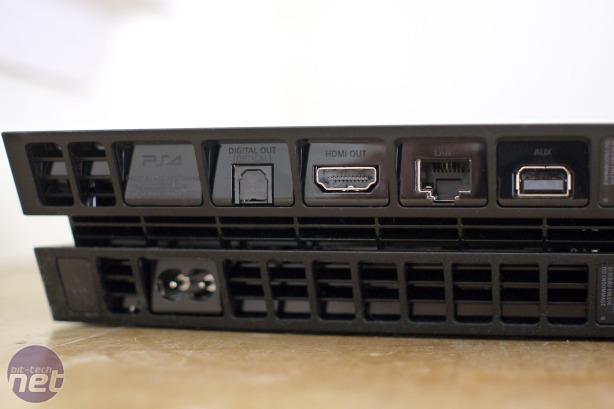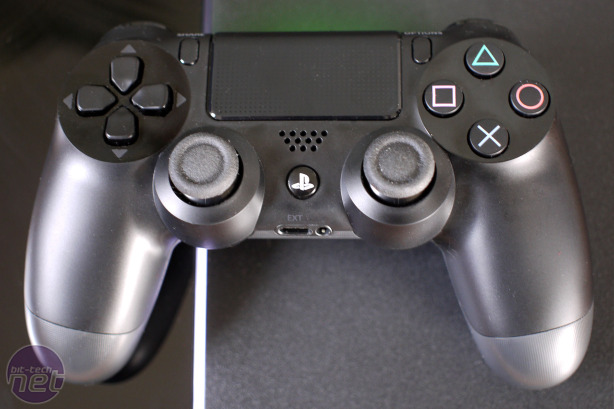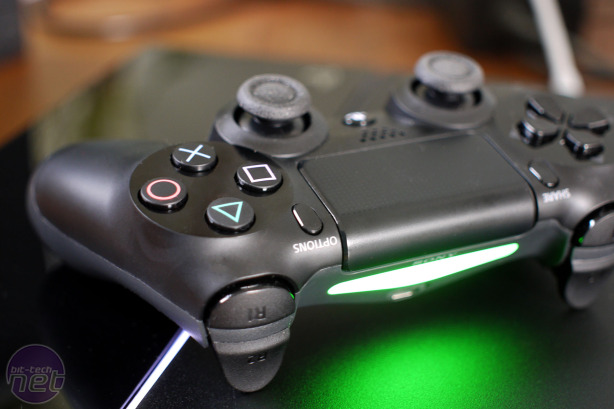
PlayStation 4 Review
Manufacturer: Sony Computer EntertainmentUK Price: £349.00 (inc VAT)
US Price: $399
It’s no secret that Sony struggled with the PlayStation 3. It was a powerful console for its time, but one that developers often failed to make the most of, leaving many cross-platform games running better on the Xbox 360. It also suffered from mixed marketing messages in its crucial early days. Was it a games console or an all-singing, all-dancing multimedia powerhouse? Were you willing to pay extra for a system which could double as a Blu-ray player? All of this, along with a year’s head start in Europe, left the PS3 trailing the Xbox 360 in terms of sales. The architecture that made it so challenging paid off in such late technical triumphs as The Last of Us and Beyond: Two Souls, but it left Sony on the back foot for most of an era.
It hasn’t made the same mistakes with PlayStation 4. The x86-based architecture, designed around essentially off-the-shelf AMD technology, is easy to code for and – incidentally – broadly similar to what you’ll find in the new Xbox One. What’s more, PlayStation 4 is specified to out-perform its Microsoft rival while priced to undercut it. Perhaps most importantly, the PS4 is being sold specifically as a games console. It can play Blu-rays, work with online movie and music services and browse the Web, but first and foremost it plays games.
PlayStation 4 - Hardware
With a footprint of 275 x 305mm and just 53mm tall, the PS4 is surprisingly compact. In fact, it’s not much larger than the old PS3 Slim, and it’s a lot smaller and slimmer than Microsoft’s chunky Xbox One. It can lie horizontally or sit vertically on a stand (not supplied) and either way the combination of the two-tone matt and gloss black finish, glowing strip and angular design looks good. Sony has also taken great pains to blend the functional bits of the console into the design, so that the USB ports at the front sit inside the same horizontal crevice as the slot-loading Blu-ray drive, while the touch-sensitive power and disc eject buttons are minute, forming part of a vertical line running down. These are sometimes hard to locate in a hurry, but it's a minor niggle.Hidden away in the grill-like constructions at the back you’ll find the power connector, an HDMI output, a Gigabit Ethernet port, another USB port marked AUX and an SP/DIF audio output. Like previous PlayStations – and unlike the Xbox 360 or Xbox One – the PS4 has an internal PSU, so there’s no need to house some hefty brick-like effort underneath your TV.
In use, the PS4 is quiet – quieter than many set-top boxes and a lot quieter than the Xbox 360 – and it’s only when you have a disc spinning in the Blu-ray drive or a game pushing the hardware for substantial periods of time that the noise levels pick up. Even then they’re perfectly tolerable. Overall, we’re looking at what’s arguably Sony’s best console design since the slim PS2.
In comparison to the Xbox One it has one significant advantage too, which is that its hard drive can be swapped without voiding the device's warranty. Moreover any type of 2.5in SATA drive can be used, opening up the option of upgrading to a lightning fast 1TB SSD in the future - something that really would be welcome given games are stored on the HDD. In contrast the Xbox One uses a proprietary hard drive system and even accessing the drive voids the warranty. Otherwise both systems are actually very easy to dismantle, if preserving your warranty isn't a concern - dust-eradicating spring cleans shouldn't be an issue here.
PlayStation 4 - Controller
The PS4’s DualShock 4 controller is also Sony’s best ever controller, carrying on the familiar look and feel of the classic DualShock, but adding a range of enhancements that give developers more options and gamers more control. The most obvious is the touchpad in the centre – a touch-sensitive, click-able surface that can be used to move pointers or recognise gestures while in-game. At the moment it’s not used a whole lot; even the console’s flagship FPS game, Killzone: Shadow Fall, just gets you to swipe it to change the mode of a companion drone, but there’s certainly potential here to be explored. The same goes for the glowing light bar at the back, which can be picked up by the PlayStation Eye camera for player recognition and motion control (more on this later).Otherwise, we’re talking tweaks. One of the most important is that the arms of the controller have been thickened and rounded to provide a more comfortable grip, largely eliminating the complaints many had about the spindly PS3 controller.
The analogue pads have a tighter feel and more precision in the centre than the previous DualShocks, while the shoulder and trigger buttons on the rear have been remoulded to make them fall more easily to hand and feel a little more comfortable. You’ll notice that both changes make a tangible difference while you’re playing FPS games. The Start button has been moved to accommodate the trackpad and been labelled Options, while the old Select button has gone altogether and been labelled Share (we’ll cover why a little later on). Dual Shock 4 still has the old SixAxis accelerometers built-in for motion control, while the mini-USB socket used for charging is now micro-USB.
The battery in the DualShock 4 is a minor weakness, lasting roughly six or seven hours of gaming before it needs a charge, but there are some extras to compensate. A built-in speaker is used for spot effects in-game, including collectible audio-logs in Killzone: Shadowfall, and it also has a built-in stereo headset socket. You can use this to connect the cheap-and-cheerful mono headset provided, or to connect a premium gaming headset or standard headphones. Cleverly, the PS4’s audio settings allow you to route either chat or full game audio to this socket, meaning you can plug a pair of headphones directly into the controller for a spot of late-night gaming.

MSI MPG Velox 100R Chassis Review
October 14 2021 | 15:04













Want to comment? Please log in.